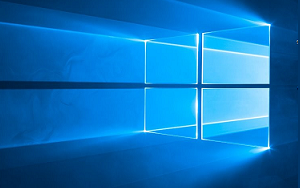Learn how to effectively enable and customize the "Do Not Disturb" mode on your Android device. This article provides a comprehensive guide on managing notifications, exceptions, and schedules to enhance your mobile experience.
Introduction
In our digitally connected world, smartphones have become an integral part of our daily lives. However, the constant barrage of notifications can be overwhelming and disruptive. Android's "Do Not Disturb" (DND) mode offers a practical solution, allowing you to silence your device while still keeping essential alerts. In this guide, we will walk you through the steps to enable and customize the "Do Not Disturb" mode on your Android device, ensuring a balance between connectivity and tranquility.
Accessing "Do Not Disturb" Mode
To begin using "Do Not Disturb" mode, you first need to access it on your Android device. Follow these steps:
- Open Quick Settings: Swipe down from the top of your screen to open the Quick Settings panel.
- Locate "Do Not Disturb": Look for the "Do Not Disturb" icon, typically represented by a circle with a minus sign.
- Activate DND: Tap the icon to enable "Do Not Disturb" mode immediately.
Customizing "Do Not Disturb" Settings
Once "Do Not Disturb" mode is activated, you can customize its settings to suit your preferences. Here's how:
1. Allow Exceptions
You may want certain notifications to bypass the "Do Not Disturb" mode. To set exceptions:
- Go to Settings: Open the Settings app on your device.
- Select Sound & Notification: Tap on "Sound & Notification" or "Sound" depending on your device model.
- Choose "Do Not Disturb" Preferences: Navigate to "Do Not Disturb" preferences.
- Manage Exceptions: Under "Exceptions," you can allow calls, messages, alarms, and more by toggling the appropriate options.
2. Schedule "Do Not Disturb" Mode
Automate "Do Not Disturb" mode to activate at specific times:
- Set a Schedule: In the "Do Not Disturb" menu, tap on "Schedules."
- Create a Schedule: Choose "Add More" to create a new schedule based on time, event, or location.
- Define Parameters: Specify the days, start time, and end time for DND activation.
3. Priority Only Mode
Enable "Priority Only" mode to allow only important notifications:
- Access Priority Settings: Navigate to the "Do Not Disturb" menu.
- Select Priority Only: Choose "Priority Only" to allow notifications from selected contacts and apps.
- Customize Priority: Adjust which notifications are considered priority by managing contacts and app settings.
Using "Do Not Disturb" with Google Assistant
The Google Assistant can be a powerful tool for managing "Do Not Disturb" mode. Here's how you can use voice commands:
- Activate Google Assistant: Say "Hey Google" or press the Google Assistant button.
- Command for DND: Use commands like "Turn on Do Not Disturb," "Turn off Do Not Disturb," or "Set Do Not Disturb schedule."
- Confirm Action: Google Assistant will confirm the action, providing a seamless way to manage your notifications.
Troubleshooting "Do Not Disturb" Issues
If you encounter any issues with "Do Not Disturb" mode, consider the following troubleshooting tips:
- Check Permissions: Ensure that your device has the necessary permissions to manage notifications.
- Restart Device: A simple restart can resolve temporary software glitches.
- Update Software: Keep your device software updated to the latest version for optimal performance.
- Reset Settings: If problems persist, consider resetting your "Do Not Disturb" settings to default.
Conclusion
Android's "Do Not Disturb" mode is a versatile feature that enhances your smartphone experience by providing control over notifications, alerts, and interruptions. By customizing its settings and utilizing scheduling options, you can ensure that your device serves you without overwhelming you. Embrace the power of "Do Not Disturb" mode to maintain focus, enjoy uninterrupted rest, and improve your digital well-being.







